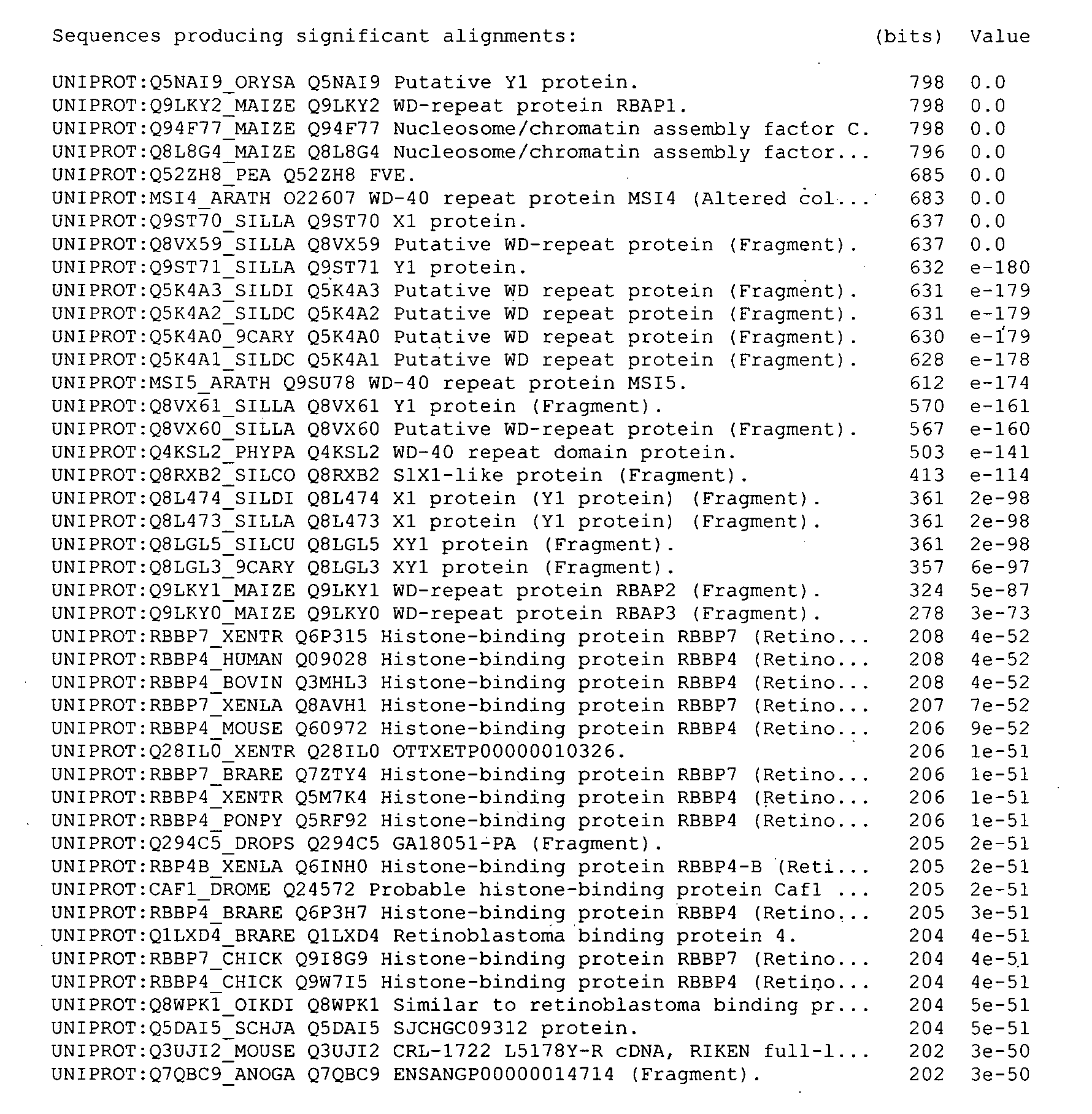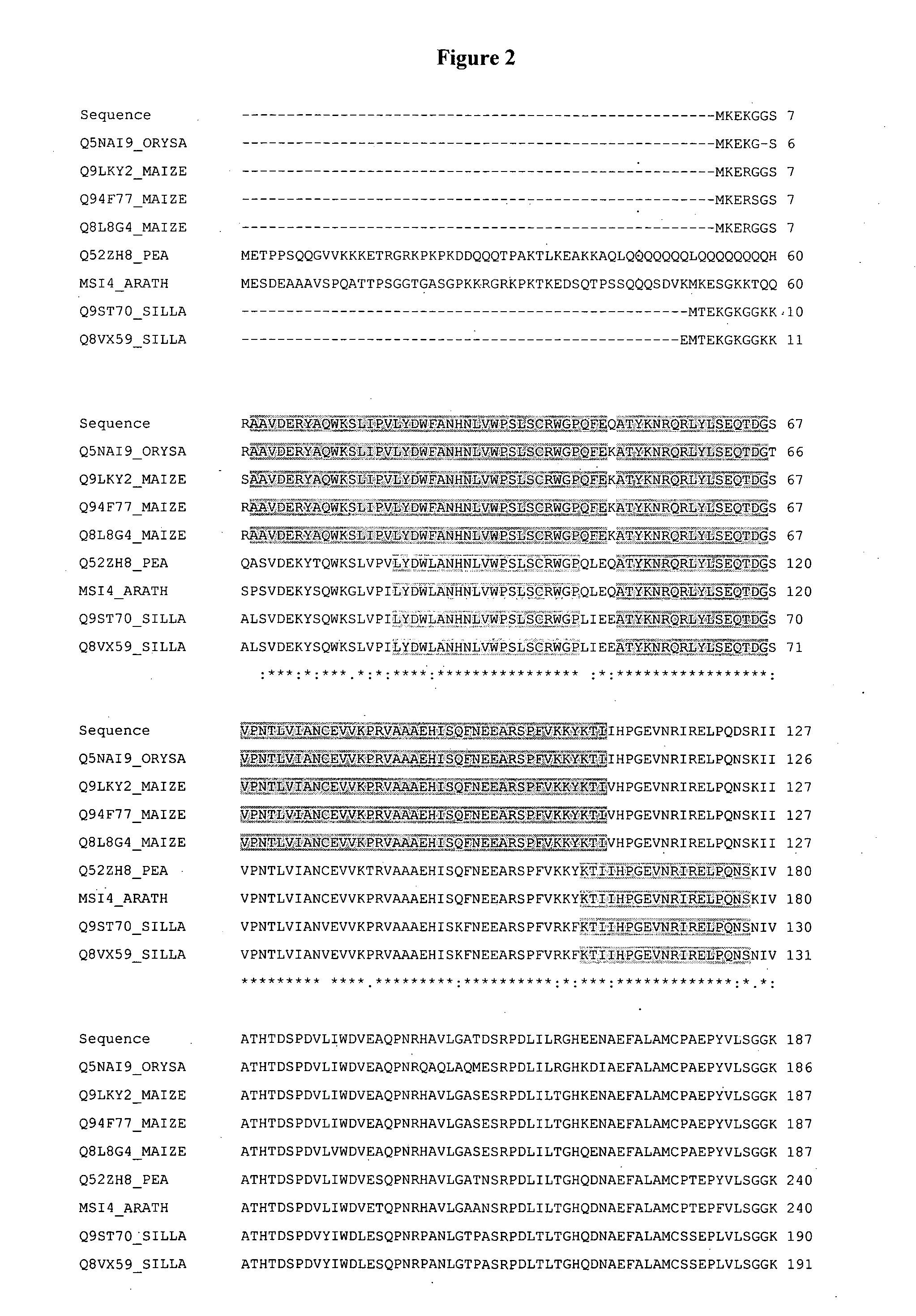Methods and polynucleotides for improving plants
- Summary
- Abstract
- Description
- Claims
- Application Information
AI Technical Summary
Benefits of technology
Problems solved by technology
Method used
Image
Examples
example 1
Altered Tillering Time by In-Plant Expression of a Polynucleotide of the Invention
[0232]A polynucleotide designated ORF107 (SEQ ID NO:12) was identified in a ViaLactia Biosciences Ltd proprietary ryegrass (Lolium perenne) Gene Thresher (Orion Genomics) genomic library.
[0233]ORF107 appears to encode a WD-40 repeat polypeptide (SEQ ID NO:1). WD-40 repeats (also known as WD or beta-transducin repeats) are short ˜40 amino acid motifs, often terminating in a Trp-Asp (W-D) dipeptide. WD-containing proteins have 4 to 16 repeating units, all of which are thought to form a circularised beta-propeller structure. WD-repeat proteins are a large family found in all eukaryotes and are implicated in a variety of functions ranging from signal transduction and transcription regulation to cell cycle control and apoptosis. The underlying common function of all WD-repeat proteins is coordinating multi-protein complex assemblies, where the repeating units serve as a rigid scaffold for protein interactio...
PUM
| Property | Measurement | Unit |
|---|---|---|
| Fraction | aaaaa | aaaaa |
| Time | aaaaa | aaaaa |
| Length | aaaaa | aaaaa |
Abstract
Description
Claims
Application Information
 Login to View More
Login to View More - R&D
- Intellectual Property
- Life Sciences
- Materials
- Tech Scout
- Unparalleled Data Quality
- Higher Quality Content
- 60% Fewer Hallucinations
Browse by: Latest US Patents, China's latest patents, Technical Efficacy Thesaurus, Application Domain, Technology Topic, Popular Technical Reports.
© 2025 PatSnap. All rights reserved.Legal|Privacy policy|Modern Slavery Act Transparency Statement|Sitemap|About US| Contact US: help@patsnap.com



